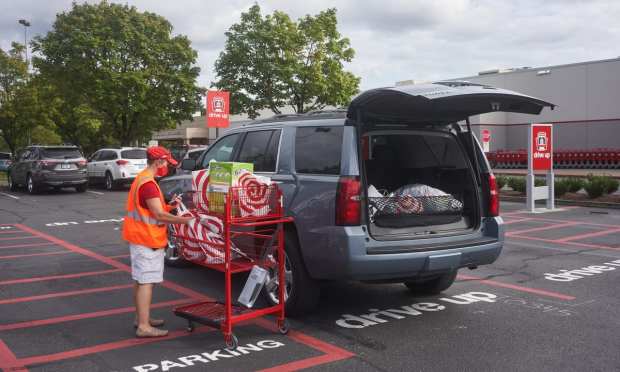Data Brief: 42 Pct Will Spend More At Stores With Online Ordering/Curbside Pickup And Tighter Data Security

With a nod to the grocery “arms race” currently playing out between retail titans Amazon and Walmart, as well as the other prominent players turning various modes into new business models, The Bring-It-To-Me Economy: How Online Marketplaces And Aggregators Drive Omnichannel Commerce, a PYMNTS and Carat from Fiserv collaboration, zeroes in on the consumer demos and desires driving demand for bring-it-to-me delivery lifestyles.
Surveying a census-balanced panel of close to 5,270 U.S. consumers, The Bring-It-To-Me Economy study states that a desire to avoid brick-and-mortar shopping began with COVID-19 fears “but has since evolved into a broader desire to save time and hassle in every one of their shopping experiences — including when it comes to shopping in stores. The biggest thing brick-and-mortar retailers can do to drive more foot traffic in this new economy is to provide consumers a way to avoid going inside at all,” with 42 percent of consumers saying they’d be do more brick-and-mortar business if they could order online and pick up curbside.
As consumers crave more convenience and ease from not just grocers but online marketplaces and aggregators more broadly, the new The Bring-It-To-Me Economy study notes that “Amazon is the most widely used of these marketplaces by far, with Amazon customers now representing 91 percent of the adult population — far more than all other nationally known digital marketplaces combined.”
Also, 70 percent of consumers have used marketplaces including “Etsy, eBay and Mercari over the past year,” per the study, adding that “there are now more consumers who shop on digital marketplaces than there are consumers who shop at the brick-and-mortar locations of either Walmart, other national retailers or local shops on Main Streets throughout the country.”
Despite the scope of this digital shift, fears around data security continue to haunt consumers.
According to the latest study, “The most common security scare over the last year was instances in which consumers never received items they purchased online, while the next most common was consumers noticing strange charges made to their credit or debit cards. Twenty-four percent of consumers say at least one of the online purchases they made in the past 12 months was never delivered, and 20 percent have observed that one of their cards was charged with purchases they never made.”
Add to that 16 percent of consumers who received bank notifications about compromised accounts, 14 percent who were charged for at least one canceled subscription, with “the most severe security scares witnessed during the past year also the rarest … [as the] survey revealed that 7.9 percent of consumers had discovered fraudulent accounts opened in their names.”
